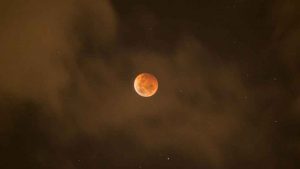 NewDelhi: The first eclipse of 2020, a lunar eclipse is happening on January 10. The lunar eclipse, also known as chandra grahan by many, is penumbral, which means, the Earth will block some of the sunlight from directly reaching the Moon’s surface and only the outer shadow (the penumbra) will fall on the Moon.
NewDelhi: The first eclipse of 2020, a lunar eclipse is happening on January 10. The lunar eclipse, also known as chandra grahan by many, is penumbral, which means, the Earth will block some of the sunlight from directly reaching the Moon’s surface and only the outer shadow (the penumbra) will fall on the Moon.
The lunar eclipse or chandra grahan will be visible on the intervening nights of January 10 and 11. The eclipse will start at 10:37 pm on January 10 and will end at 2:42 am on January 11. The full visual impact of Chandra Grahan will be seen at around 12:41 am. During this time, the entire moon will be covered by the partial shadow region of the Earth. It will be visible in Asia, Europe, Africa and Australia and in some parts of America.
In Delhi, Uttar Pradesh, Punjab and other northern states of the country, the penumbral lunar eclipse will not be visible much due to clouds, rains or fog.
Two celestial events, which will take place at the same time for a penumbral lunar eclipse tonight, will be:
The Moon will be in the Full Moon phase.
The Sun, Earth and Moon will be nearly aligned, but not as closely aligned as during a partial eclipse.
The penumbral lunar eclipse is the most common and can occur many times a year. A total penumbral lunar eclipse is a rare event when the entire Moon comes into the penumbra region of Earth’s shadow.
Lunar Eclipses in 2020: When is the next Lunar Eclipse?
There will be four penumbral lunar eclipses in 2020. The first one will take place on January 10, while the second would take place on June 5, third on July 4 and fourth on November 29. Among these, only the June 5 eclipse will be fully visible in India and November 29 eclipse will be partially visible.
Bureau Report
Leave a Reply